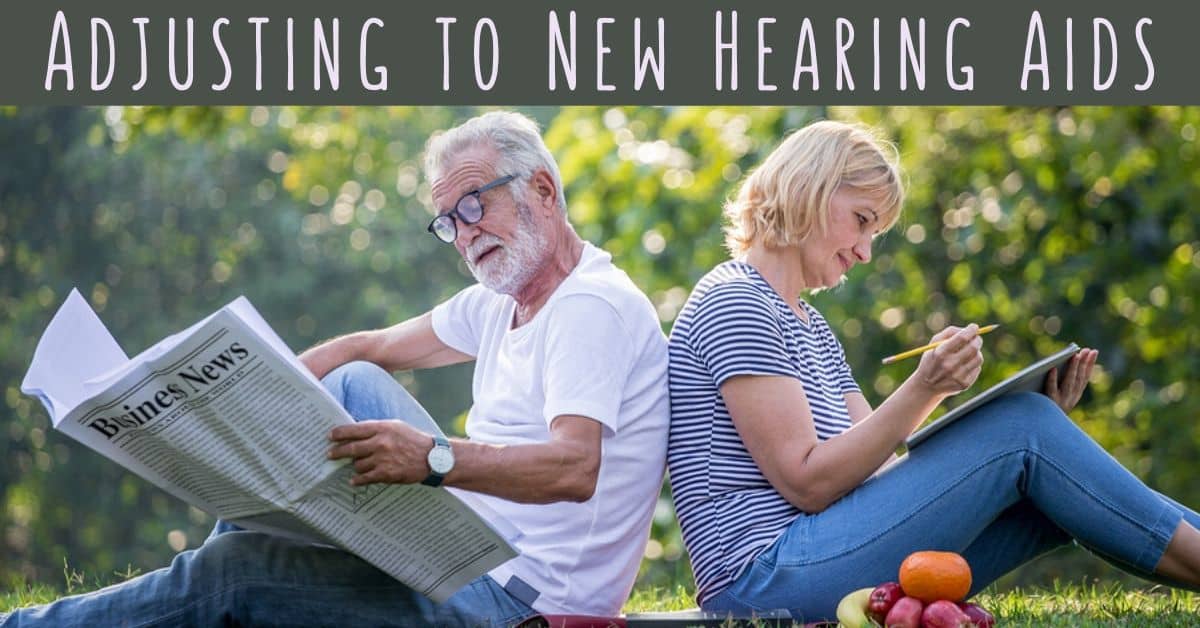
Adjusting to New Hearing Aids
Congratulations on your new hearing aids! You have taken the proactive step into a world of easier communication and rich enjoyment of the sonic environment. Far too many people fall short of getting assistance with their hearing loss, and the reasons have a wide range. Fortunately, you understand the necessity to assist your hearing in order to reap the many benefits they stand to afford you. However, simply getting hearing aids and popping them into your ears is often not enough to reap all those benefits. Unlike putting on a pair of eyeglasses that immediately transform the visual landscape into a clearer picture, hearing aids function quite differently. They change the aural environment in a number of ways, and some people find those changes unsettling at first. Let’s look at some essential steps to follow if you want to get the most out of your new hearing aids. The adjustment period may take a moment, but you stand to gain a wide array of benefits on the other side of that adjustment period.
Taking Advantage of Consultation
After your hearing health provider has matched you with a pair of hearing aids that are suited to your needs and lifestyle, they can be the best source of guidance in how to use them. When you are fitted with your new devices, bring along a friend, loved one, or family member to the meeting. This session can be full of details about how hearing aids function, how to maintain them, and the best times to try them out. With a source of moral support, you can be sure that none of the details are falling through the cracks. Your consultation is a crucial piece of the puzzle of adjustment, so be sure to follow the steps your provider prescribes to you.
Practice in a Controlled Environment
If you were to pop your new hearing aids in and immediately go to a party, you might find the experience overwhelming. When these devices transform the sonic world, they will present you with a different way of communicating, listening, and deciphering what the environment has to offer you. Rather than jumping into the deep end of the pool with a social gathering or trip to a chaotic public place, it is recommended to practice wearing your hearing aids in your quiet home at first. Simply put in the devices and walk around the house for a bit. You might be surprised that your home isn’t as quiet as you thought! Pay attention to the sounds outside the window, running water from the faucet, appliances, and other normal household sounds. Getting used to these sounds will prepare you for the next step of more lively settings.
Take It Slow
Once you’re ready to try out your hearing aids in a more complex sound environment, take it slow. You may want to try them out with just one other friend, loved one, or family member who can be there for assistance, knowing what you’re going through. A limited time can be helpful, as well. Simply insert your hearing aids for a few minutes to hear what the world is like with and without their help. As time goes on, you will become accustomed to the support they provide, and you can slowly increase the time you use them. Complicated sound environments with lots of different speakers should be saved for last in the adjustment period. Parties, restaurants, and other social events have many speakers, making them the most challenging context for most hearing aid wearers.
Seek Out Ongoing Support
Other people who wear hearing aids can be the best source of assistance as you move forward. Though each model of hearing aids provides a slightly different sound profile, there are common experiences that will help you. For instance, if you find that driving is overwhelming with your hearing aids in, as a trusted friend who has hearing aids. Perhaps they will have a tip for you, such as navigation, turning down music, or limiting the number of other passengers. Your hearing health provider is a source of ongoing support, as well. You can remain in touch to get a sense of what you can expect, common obstacles, and simple pointers that make hearing aids as beneficial as they can be.
